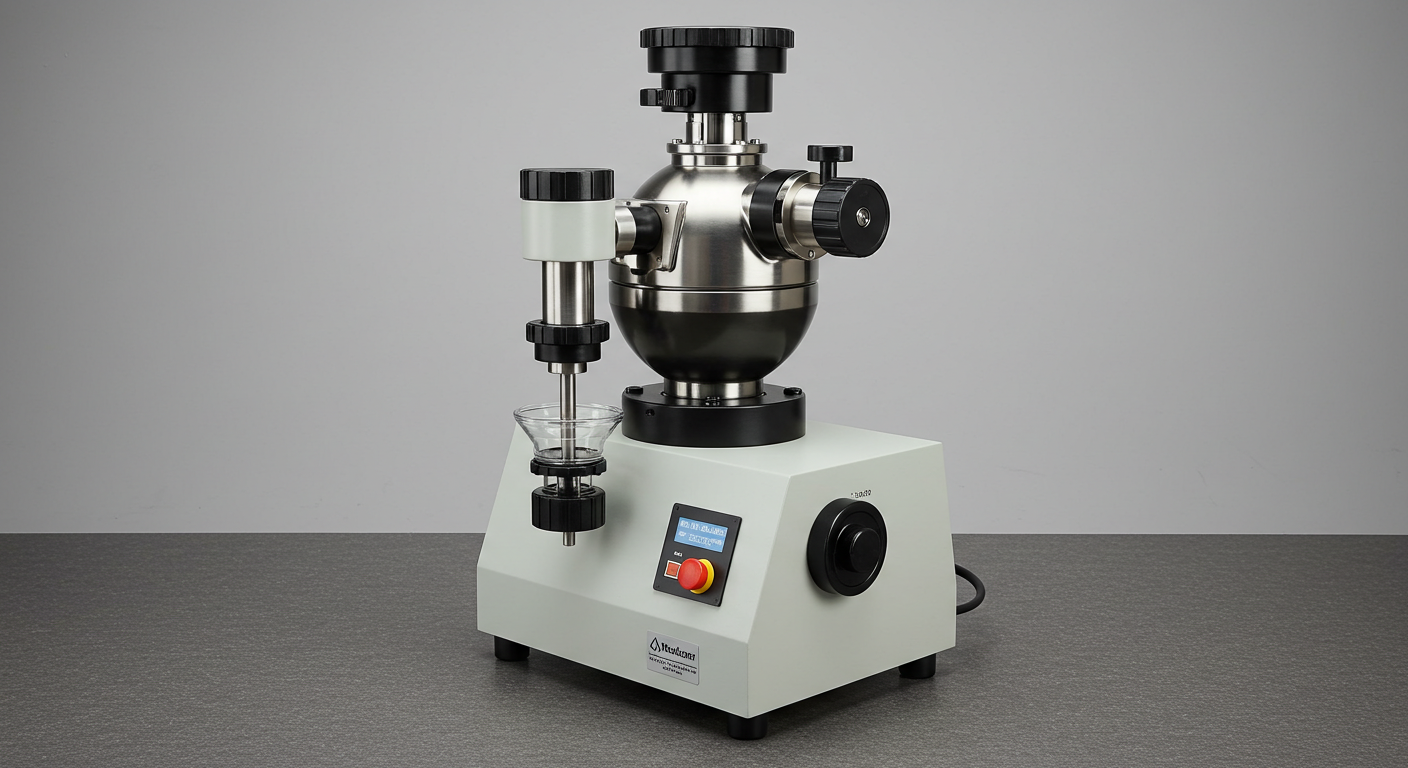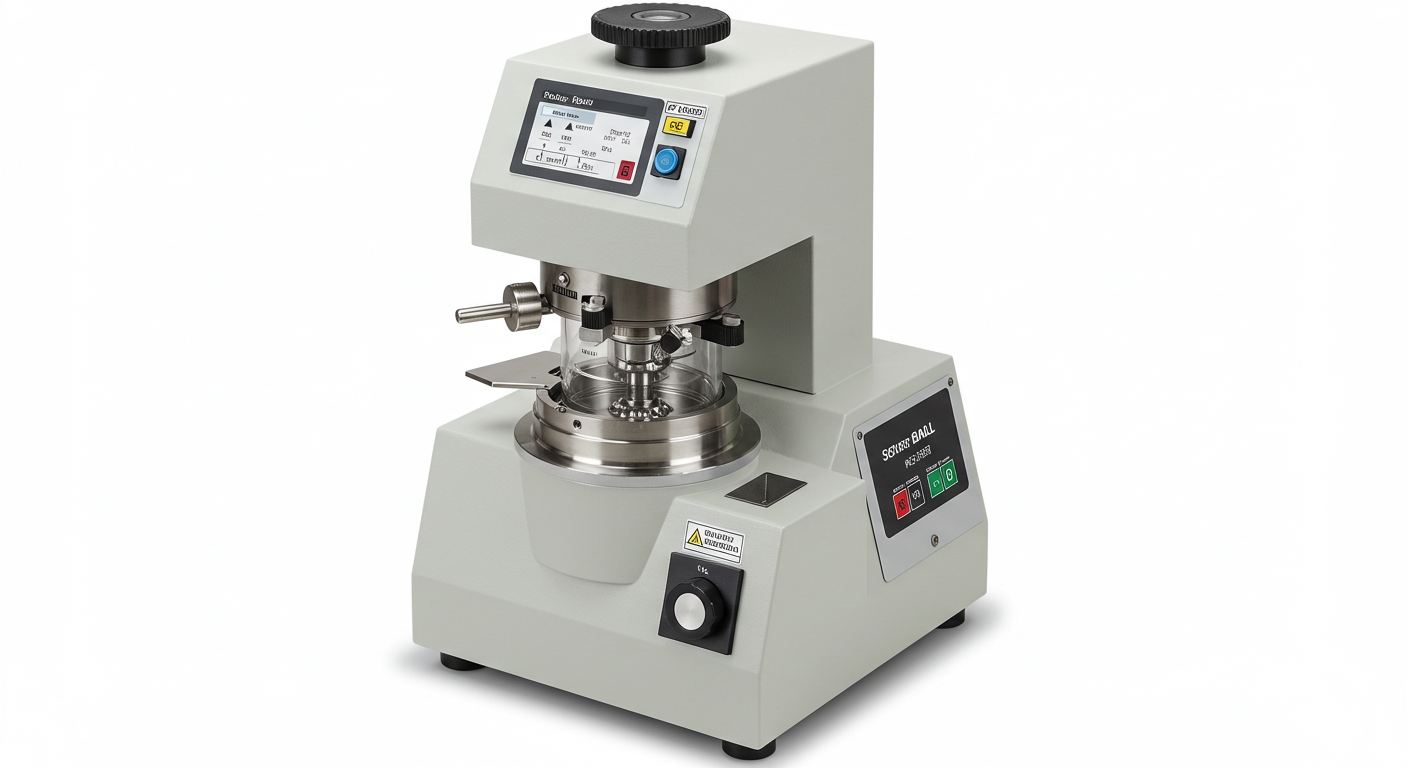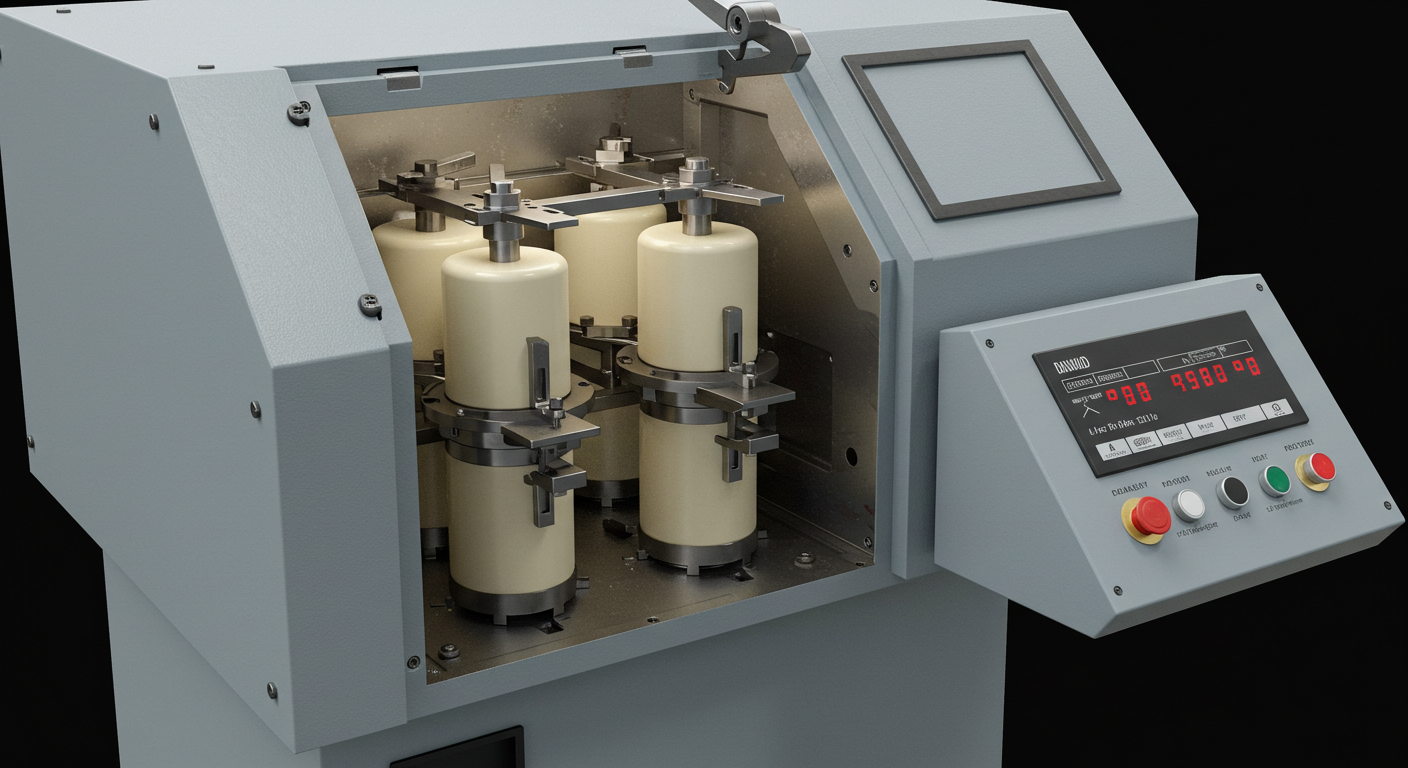The planetary micro mill is a sophisticated piece of equipment used for ultra-fine grinding of various materials. It excels in achieving extremely small particle sizes, often in the sub-micron range. One popular example is the [pm 100 planetary ball mill], known for its precision and efficiency. These mills operate on a planetary motion principle, enabling rapid and effective size reduction. This article delves into the workings, applications, and advantages of planetary micro mills.

Understanding Planetary Ball Mill Machines
The planetary ball mill machine is a powerful tool extensively used across various industries for pulverizing, mixing, and homogenizing materials. Unlike conventional ball mills, planetary ball mills employ a unique planetary motion. This motion generates high centrifugal forces within the grinding jars, resulting in significantly faster and finer grinding outcomes. The design typically consists of a central rotating sun wheel around which several grinding jars are arranged. These jars also rotate on their own axis, creating a complex motion that intensifies the grinding process.
The efficiency of a planetary ball mill machine stems from the combined effect of impact, friction, and shear forces generated within the grinding jars. The material to be milled is placed inside the jars along with grinding media, typically balls made of ceramic, steel, or other hard materials. As the jars rotate, the balls collide with the material, crushing and grinding it into fine particles. The high energy input from the planetary motion allows for the processing of even hard and brittle materials.
What is a planetary mill used for?
The versatility of the planetary micro mill makes it indispensable in numerous fields. Some key applications include:
Materials Science: Creating nanoparticles, alloying materials, and preparing samples for X-ray diffraction (XRD) and other analytical techniques.
Pharmaceuticals: Fine grinding of drug substances for improved bioavailability and formulation.
Geology: Pulverizing rocks and minerals for geochemical analysis.
Ceramics: Processing raw materials for ceramic production, ensuring homogeneity and desired particle size distribution.
Chemistry: Synthesizing compounds, creating catalysts, and conducting mechanochemical reactions.
Food Industry: Grinding food samples for analysis and creating fine powders for various applications.
The planetary micro mill is not just limited to size reduction; it can also be used for mixing and homogenizing different materials, making it a multi-functional tool in research and development.
What is the difference between a ball mill and a planetary ball mill?
While both ball mills and planetary ball mills are used for grinding materials, there are significant differences in their design, operation, and performance:
| Feature | Ball Mill | Planetary Ball Mill |
|---|---|---|
| Motion | Simple rotation of a cylindrical drum. | Complex planetary motion with jars rotating on their own axis while revolving around a central axis. |
| Grinding Force | Primarily relies on gravity and the tumbling action of the balls. | High centrifugal forces generated by the planetary motion. |
| Grinding Speed | Slower grinding speeds. | Significantly faster grinding speeds. |
| Particle Size | Typically produces particles in the micron range. | Capable of producing particles in the sub-micron and nano range. |
| Energy Efficiency | Lower energy consumption. | Higher energy consumption due to the complex motion. |
| Applications | Suitable for large-scale industrial applications. | Ideal for research, development, and small-scale production requiring ultra-fine grinding. |
In essence, the planetary micro mill offers superior grinding performance and is designed for applications demanding extremely fine particle sizes and high precision. The [pm 100 planetary ball mill] exemplifies this advanced technology.
What is the main function of planetary rolling mill?
The term "planetary rolling mill" can be slightly ambiguous, as it can sometimes refer to the milling process within a planetary micro mill. However, in the context of metal forming, a planetary rolling mill is a specialized machine used for reducing the thickness of metal sheets or strips. Its main function is to achieve significant deformation in a single pass, increasing productivity and improving material properties.
The planetary rolling mill consists of a large backup roll surrounded by several smaller work rolls that rotate around the backup roll. The metal sheet is fed between the work rolls and the backup roll, and the pressure exerted by the rotating work rolls causes the material to deform. This process results in a more uniform and controlled reduction in thickness compared to traditional rolling methods.
While the term "planetary rolling mill" in metal forming is distinct from the "planetary ball mill" used for grinding, it's important to distinguish between these two applications. The key function of a planetary micro mill, including models like the [pm 100 planetary ball mill], is the ultra-fine grinding of materials, not the deformation of metals.
What is the critical speed of a planetary ball mill?
The critical speed of a planetary ball mill is a crucial parameter that affects its performance. It refers to the speed at which the centrifugal force acting on the grinding balls equals the gravitational force. At this speed, the balls will adhere to the inner wall of the grinding jar and cease to effectively grind the material.
The critical speed (Nc) can be calculated using the following formula:
Nc = (1 / 2π) * √(g / R)
Where:
g is the acceleration due to gravity (approximately 9.81 m/s²)
R is the radius of the grinding jar
Operating a planetary micro mill at or above its critical speed is detrimental to its efficiency. The balls will not tumble and impact the material, resulting in poor grinding performance. Therefore, it is essential to operate the mill below its critical speed, typically at 60-80% of the critical speed, to ensure optimal grinding efficiency. Most planetary micro mill controllers, including those for the [pm 100 planetary ball mill], allow for precise speed adjustments to maintain optimal operating conditions.
Planetary Micro Mill Pulverisette 7: A Closer Look
The Planetary micro mill pulverisette 7 is a well-regarded model in the world of laboratory milling. Available in both Premium Line and Classic Line variants, the Pulverisette 7 is known for its robust construction, ease of use, and ability to achieve exceptionally fine particle sizes. Both lines are designed for a wide range of applications, from sample preparation for analytical techniques to the synthesis of nanomaterials.
Planetary Micro Mill Pulverisette 7 Premium Line
The Premium Line of the Planetary micro mill pulverisette 7 offers enhanced features for advanced applications. These features include:
Programmable Control: Precise control over grinding parameters such as speed, time, and pause intervals.
Real-Time Monitoring: Display of critical parameters during operation, allowing for optimization and reproducibility.
Cooling System: Integrated cooling system to prevent overheating during prolonged grinding, preserving the integrity of temperature-sensitive samples.
Automatic Jar Clamping: Ensures secure and consistent jar clamping, enhancing safety and reproducibility.
The Premium Line is ideal for research institutions and industries requiring the highest level of precision and control.
Planetary Micro Mill Pulverisette 7 Classic Line
The Classic Line of the Planetary micro mill pulverisette 7 provides a reliable and cost-effective solution for routine milling tasks. While it lacks some of the advanced features of the Premium Line, it still offers excellent grinding performance and ease of use.
Key features of the Classic Line include:
Simple Operation: Intuitive controls for setting grinding time and speed.
Durable Construction: Robust design for long-term reliability.
Efficient Grinding: High grinding efficiency for a wide range of materials.
The Classic Line is well-suited for educational institutions and industries seeking a dependable milling solution without the need for advanced features.
Planetary Micro Mill Manual, Parts, and Operation
Understanding the manual, parts, and operation of a planetary micro mill is crucial for ensuring its longevity and optimal performance.
Planetary Micro Mill Manual and PDF Resources
The Planetary micro mill manual provides detailed instructions on the installation, operation, maintenance, and troubleshooting of the mill. A Planetary micro mill manual pdf is often available from the manufacturer's website or upon request. This manual typically includes:
Safety Precautions: Important guidelines for safe operation of the mill.
Installation Instructions: Step-by-step instructions for setting up the mill.
Operating Procedures: Detailed instructions on how to load samples, set grinding parameters, and start the mill.
Maintenance Schedule: Recommended maintenance tasks to ensure optimal performance and longevity.
Troubleshooting Guide: Common problems and their solutions.
Parts List: A comprehensive list of all parts with part numbers.
Always refer to the Planetary micro mill manual before operating the mill or performing any maintenance tasks.
For example, the Fritsch PULVERISETTE 7 manual is a comprehensive guide specific to that model, offering detailed instructions and safety guidelines.
Planetary Micro Mill Parts
Understanding the different Planetary micro mill parts is essential for maintenance and repair. Common parts include:
Grinding Jars: These are containers where the sample and grinding media are placed. They come in various materials such as agate, zirconia, stainless steel, and tungsten carbide.
Grinding Balls: The grinding media used to pulverize the sample. They also come in various materials and sizes.
Jar Clamping Mechanism: Secures the grinding jars in place during operation.
Drive Motor: Provides the power to rotate the sun wheel and grinding jars.
Control Panel: Allows the user to set grinding parameters such as speed and time.
Cooling System: Prevents overheating during prolonged operation (often found in Premium Line models).
Regularly inspecting these parts and replacing them as needed is crucial for maintaining the mill's performance.
Planetary Ball Mill Working Principle
The Planetary ball mill working principle relies on a combination of impact, friction, and shear forces to achieve ultra-fine grinding. The grinding jars are mounted on a rotating sun wheel and also rotate on their own axis. This creates a planetary motion, resulting in centrifugal forces that are much higher than those in a conventional ball mill.
As the jars rotate, the grinding balls are propelled against the sample material with considerable force. The impact of the balls crushes and breaks down the material into smaller particles. The friction between the balls and the jar walls further contributes to the grinding process. The high energy input from the planetary motion allows for the rapid and efficient grinding of even hard and brittle materials.
The [pm 100 planetary ball mill] and similar models utilize this working principle to achieve particle sizes in the nanometer range.
Planetary Ball Mill Price and Considerations
The Planetary Ball Mill price can vary significantly depending on the model, features, and manufacturer. Factors influencing the price include:
Model: Premium Line models with advanced features typically cost more than Classic Line models.
Jar Capacity: Mills with larger jar capacities tend to be more expensive.
Material of Construction: Mills with high-quality materials such as stainless steel or tungsten carbide will have a higher price tag.
Control System: Models with programmable control systems and real-time monitoring are generally more expensive.
Manufacturer: Established manufacturers with a reputation for quality and reliability often command higher prices.
When considering the Planetary Ball Mill price, it is essential to evaluate your specific needs and budget. Consider the types of materials you will be grinding, the desired particle size, and the frequency of use. While a more expensive model may offer advanced features and higher performance, a less expensive model may be sufficient for routine milling tasks. The [pm 100 planetary ball mill] offers a balance of performance and cost, making it a popular choice for many laboratories.
Choosing the Right Planetary Micro Mill
Selecting the right planetary micro mill requires careful consideration of several factors:
Application: Determine the specific applications for which you will be using the mill. This will help you identify the necessary features and performance requirements.
Sample Material: Consider the types of materials you will be grinding. Hard and brittle materials may require a more powerful mill with higher grinding speeds.
Particle Size: Determine the desired particle size. If you need to achieve extremely fine particle sizes in the nanometer range, you will need a mill capable of generating high centrifugal forces.
Throughput: Consider the amount of material you need to process. If you have high throughput requirements, you may need a mill with a larger jar capacity.
Budget: Set a budget and identify mills that meet your requirements within your price range.
Manufacturer Reputation: Choose a reputable manufacturer with a proven track record of quality and reliability.
Warranty and Support: Check the warranty and support options offered by the manufacturer.
Maintenance and Troubleshooting
Regular maintenance and troubleshooting are essential for ensuring the longevity and optimal performance of your planetary micro mill. Key maintenance tasks include:
Cleaning: Clean the grinding jars and balls after each use to prevent cross-contamination.
Inspection: Regularly inspect the grinding jars and balls for wear and tear. Replace them as needed.
Lubrication: Lubricate the moving parts of the mill according to the manufacturer's recommendations.
Calibration: Calibrate the mill regularly to ensure accurate speed and time settings.
Common problems and their solutions include:
Poor Grinding Performance: Check the grinding speed, grinding time, and ball-to-sample ratio. Make sure the balls are not worn out.
Overheating: Ensure the cooling system is functioning properly. Reduce the grinding speed or time.
Excessive Noise: Check for loose parts or worn bearings.
By following these maintenance and troubleshooting tips, you can keep your planetary micro mill in good working condition and extend its lifespan. The [pm 100 planetary ball mill], with its robust design, is known for its reliability when properly maintained.
The efficient operation of a planetary ball mill machine is highly dependent on understanding its working principles and adhering to recommended maintenance practices. The versatility and precision of these machines make them indispensable tools in numerous scientific and industrial applications.



